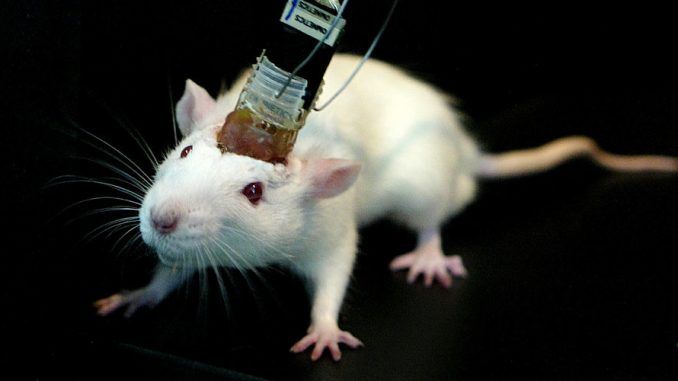
Mind and brain control is a real thing in the world of optogenetics. The technique of controlling the brain allows scientists and researchers to turn on and off specific neutrons with the push of a button. In this case, it is the brains of remote-controlled mice.
From Tech Times:
This approach has its drawbacks, however. It entails genetically engineering neurons so that they turn on or off in response to light, but exposing neurons to light requires implanting a light source within an animal’s skull. In the past, this has meant that the animals – usually mice – were restricted by wires sticking out of their skulls and and the heaviness of the device.

BYPASS THE CENSORS
Sign up to get unfiltered news delivered straight to your inbox.
You can unsubscribe any time. By subscribing you agree to our Terms of Use
Tiny, wireless LED devices developed by researchers at Stanford University have made it possible for scientists to study animal behavior without any limitations from wires and fewer concerns over the device’s weight, according to a paper published in the journal Nature Methods. The new light source is small enough that scientists can fully implant it under a mouse’s skin, and it can be controlled remotely while the mouse is scurrying about like normal.
Optogenetics allows scientists to learn about the roles of specific neurons in the brain by seeing how turning them on and off affects behavior. Without the unwieldy wires and weight of older light sources holding back the mice, scientists can be more confident that the behavioral effects observed are a result of change in neural activity they caused by switching the light on or off. The new LED device weighs just 20 to 50 milligrams — for comparison, a single, plain M&M candy weighs more than eight times that amount.
To test the device, the scientists stimulated various types of neurons in the brain, including those that extend to the spinal cord and other parts of the body. When they shined light on the right premotor cortex, for example, the mice walked in circles, because those neurons are involved in movement.
Optogenetics has only been around for less than a decade, but it has already proven to be an invaluable tool for brain research. The science fiction-like level of control it affords has shed light on some of the brain’s deepest mysteries.
Latest posts by Royce Christyn (see all)
- Irish Slaves – What The History Books Will Never Tell You - November 1, 2017
- Government Op Who Predicted Super Bowl Score Warns Of Nuclear War - February 18, 2017
- Video: Why Voting Doesn’t Change Anything & Democracy Is A Lie - May 7, 2016

This is so disgusting, I can’t find words for it
This is so disgusting, I can’t find words for it